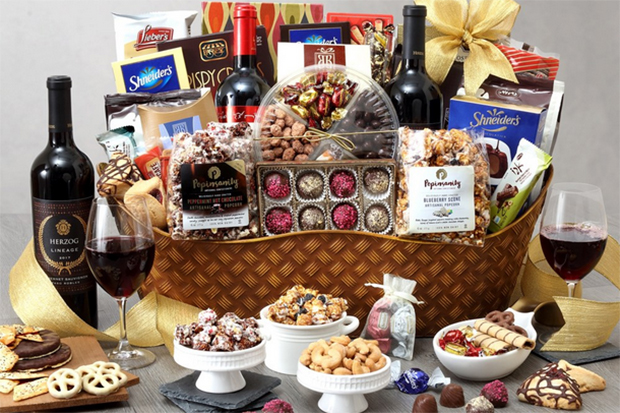What’s in the Purim basket?
 Photo/BroadwayBasketeers
Photo/BroadwayBasketeersMany Christians celebrating Easter and Jews celebrating Purim both practice the tradition of sending gifts in baskets to friends and family to mark the holidays.
Purim, which commemorates the story in the Book of Esther of how Jewish people were saved from genocide in fifth-century Persia, starts this year on the evening of March 9 and ends the following night. Easter Sunday arrives April 12 – 33 days later.
University Professor Jonathan Sarna, an expert on American Jewish history, discusses the evolution in the way Purim is celebrated, the use of Purim baskets and what effect – if any – Purim and Easter have had on one another’s gift-giving practices.
What is the significance of sending gifts in a basket at Purim? Does it have anything to do with Easter baskets?
There is absolutely no requirement of using a basket on Purim – the traditional Jewish requirement is simply to send gifts, one to another, in celebration of the miracle of Purim, which is that Jews were not destroyed in the Persian empire. In many places, the basket is used to send traditional gifts of wine, baked goods and candy, but it doesn’t have to be a basket.
The Easter basket has a much longer history. It goes back to Pagan times when the basket was symbolic of spring. It reflected the rebirth that comes following a long, cold winter. For some, the Easter basket is a well-known ritual practice connected with the holiday, but that is not at all the case for Purim.
Why give wine, candy and baked goods at Purim?
The idea of sending gifts on Purim such as wine, baked goods and sweets is rooted in the book of Esther. It recounts the practice of “sending gifts to one another and presents to the poor” (Esther 9:22).
That said, the book doesn’t describe the gifts in any detail. Clearly this was a celebratory practice, a means of commemorating with friends the Jews’ miraculous salvation. Today people distribute chocolate or cake on happy occasions, and Jews may likewise donate a kiddush in the synagogue as a form of celebration. These rituals reflect parallel means of marking joy through the exchange of food, wine, and sweets.
The sharing of wine and sweets shapes what anthropologists call communitas. Wine and food are central to many celebrations in Judaism, think of bar mitzvahs and weddings. So it has likewise been on Purim.
Christians celebrate by eating sweets at Easter as well – are the holidays and the way they’re celebrated linked at all?
Normally, we think of Easter as being much closer to Passover than Purim – of course there are connections between Easter and Passover in the Christian tradition in that the crucifixion takes place on Passover. Jesus Christ’s Last Supper is also often connected to Passover.
It is fairly rare that Easter falls on Purim. It is not impossible, but rare. The somberness of Easter and the revelry of Purim did not mesh well.
In many ways, Purim is closer to Mardi Gras than Easter, with behaviors such as gift-giving, frivolity, masquerade and so on.
How have Purim celebrations changed in the United States over time?
In the 19th century, Purim was more significant than Hanukkah for American Jews. Through the rise of Hanukkah over time, this has changed.
There were Purim balls in America, which were considered big social events of the season, in the second half of the 19th century. These brought Jews together and had an element of charity and masquerade. In Europe, there were Purim spielers, young actors who performed on Purim and would be rewarded with food and money.
For centuries, Jews dressed up in costumes and also made fun of authority figures on Purim. Even today, Purim plays put on in the U.S. have a focus on humor and satire and tweaking the powerful. That has a very long history in Jewish life.
Jonathan D. Sarna is University Professor and the Joseph H. and Belle R. Braun Professor of American Jewish History at Brandeis
Read more: Jonathan Sarna explains the Americanization of Hanukkah
Read more: Jonathan Sarna explains the tradition of Christmas trees in Jewish homes
Categories: General, Humanities and Social Sciences, Research





